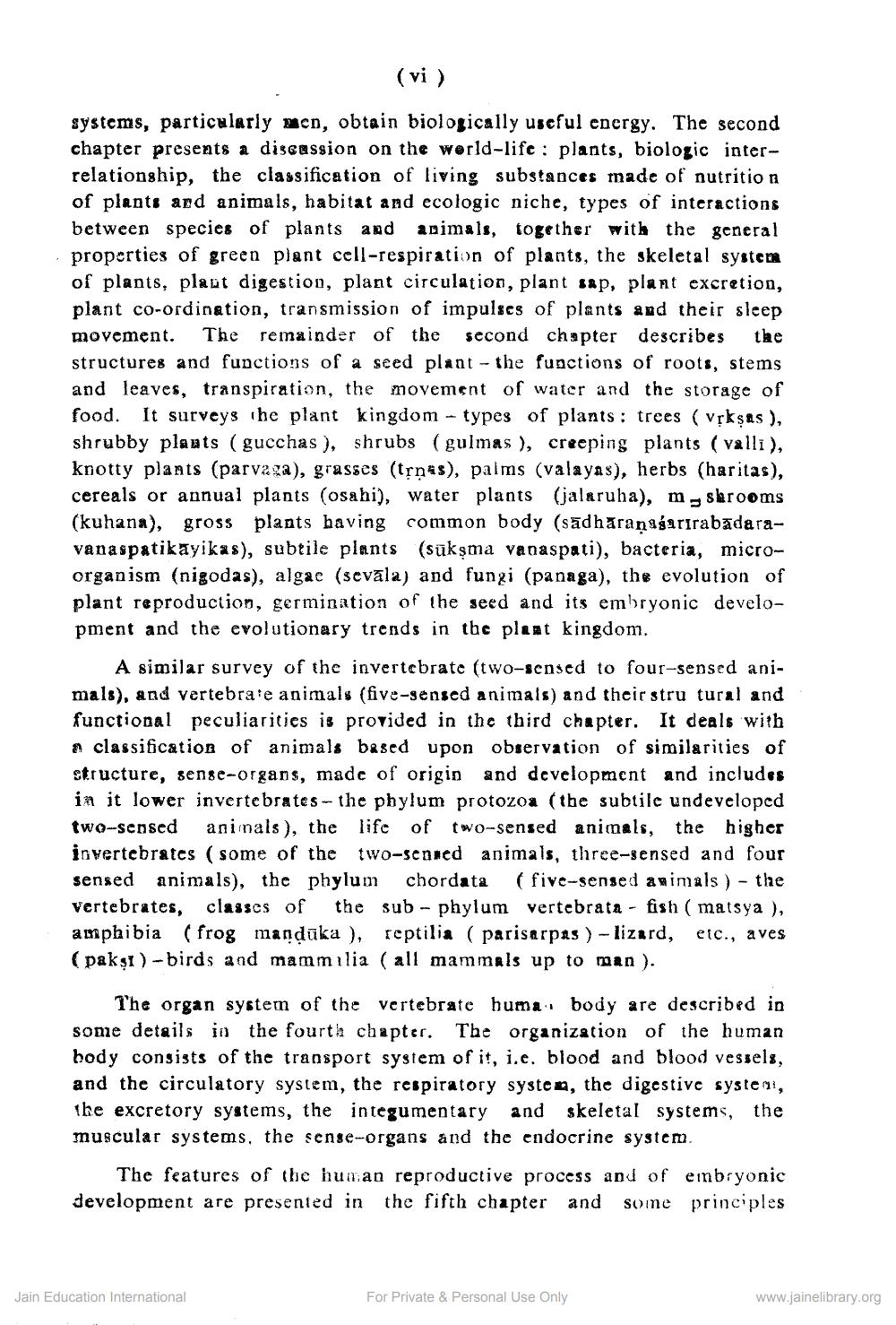Book Title: Jaina Biology Author(s): J C Sikdar Publisher: L D Indology Ahmedabad View full book textPage 7
________________ (vi) systems, particularly mon, obtain biologically useful energy. The second chapter presents a discussion on the werld-life : plants, biologic interrelationship, the classification of living substances made of nutrition of plants and animals, habitat and ecologic niche, types of interactions between species of plants and animals, together with the general properties of green plant cell-respiration of plants, the skeletal system of plants, plant digestion, plant circulation, plant sap, plant excretion, plant co-ordination, transmission of impulses of plants and their sleep movement. The remainder of the second chapter describes the structures and functions of a seed plant - the functions of roots, stems and leaves, transpiration, the movement of water and the storage of food. It surveys the plant kingdom - types of plants: trees (Vrksas), shrubby plants (gucchas), shrubs (gulmas ), creeping plants (valli), knotty plants (parvaga), grasses (trņas), palms (valayas), herbs (haritas), cereals or annual plants (osahi), water plants (jalaruha), m shrooms (kuhana), gross plants having common body (sādharansgarirabadaravanaspatikāyikas), subtile plants (sükşma vanaspati), bacteria, microorganism (nigodas), algac (sevāla) and fungi (panaga), the evolution of plant reproduction, germination of the seed and its embryonic development and the evolutionary trends in the plant kingdom. A similar survey of the invertebrate (two-sensed to four-sensed animals), and vertebrale animals (five-sensed animals) and their stru tural and functional peculiarities is provided in the third chapter. It deals with a classification of animals based upon observation of similarities of structure, sense-organs, made of origin and development and includes in it lower invertebrates the phylum protozoa (the subtile undeveloped two-sensed animals), the life of two-sensed animals, the higher invertebrates (some of the two-senned animals, three-sensed and four sensed animals), the phylum Chordata (five-sensed animals ) - the vertebrates, classes of the sub - phylum vertebrata - fish ( matsya ), amphibia (frog mandūka), reptilia ( parisarpas ) - lizard, etc., aves (pakşi ) - birds and mammalia (all mammals up to man ). The organ system of the vertebrate huma body are described in some details in the fourth chapter. The organization of the human body consists of the transport system of it, i.e. blood and blood vessels, and the circulatory system, the respiratory system, the digestive system, the excretory systems, the integumentary and skeletal systems, the muscular systems, the sense-organs and the endocrine system. The features of the human reproductive process and of einbryonic development are presented in the fifth chapter and some principles Jain Education International For Private & Personal Use Only www.jainelibrary.orgPage Navigation
1 ... 5 6 7 8 9 10 11 12 13 14 15 16 17 18 19 20 21 22 23 24 25 26 27 28 29 30 31 32 33 34 35 36 37 38 39 40 41 42 43 44 45 46 47 48 49 50 51 52 53 54 55 56 57 58 59 60 61 62 63 64 65 66 67 68 69 70 71 72 ... 340
